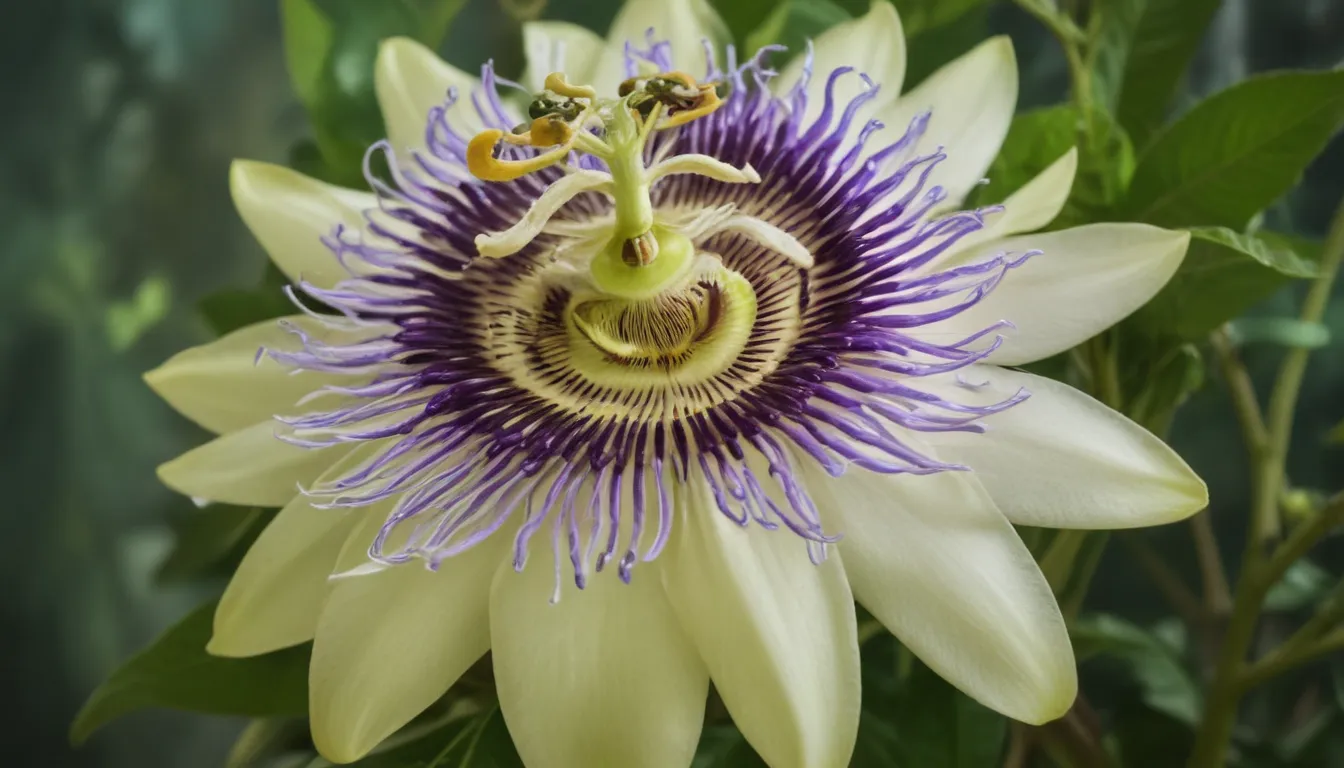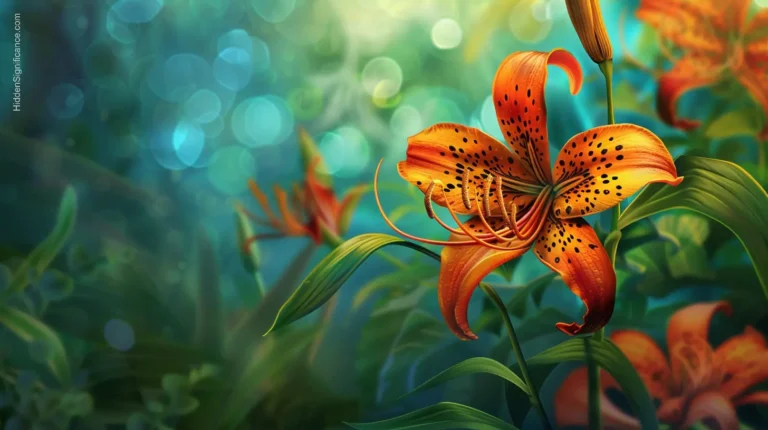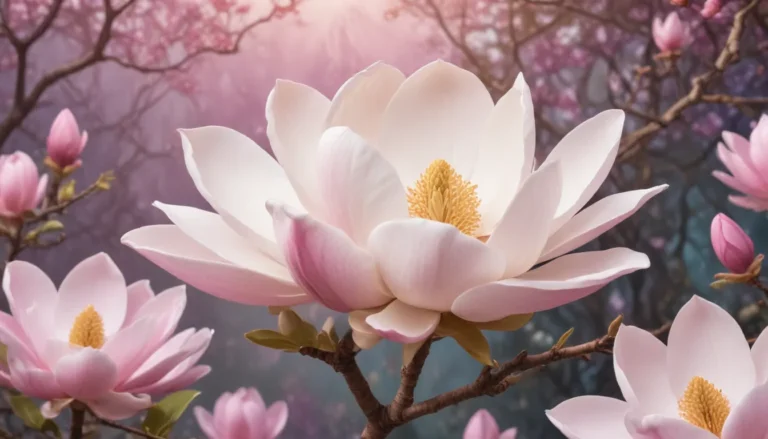
Passion flower, also known as passion vine or maypop, is a beautiful and intricate plant that has captured the hearts and minds of people for centuries. It’s not just its vibrant colors and mesmerizing patterns that make it stand out; its spiritual meaning and symbolism have been deeply rooted in various cultures around the world.
In this comprehensive guide, we will delve into the spiritual significance of passion flower, exploring its various meanings, uses, and associations across different cultures. Whether you’re a passionate gardener or simply fascinated by the rich tapestry of symbolism that surrounds us, there’s something for everyone in this exploration of the passion flower’s spiritual meaning.
The Spiritual Meaning of Passion Flower: An Overview
Before we dive into the specific cultural interpretations, let’s first understand the general symbolism associated with passion flowers. At its core, the passion flower is often seen as a representation of love, passion, and spiritual growth. Its intricate patterns and delicate structure are thought to be a reflection of the complexities of life and the human experience.
Moreover, the passion flower has been used for centuries in various spiritual practices, including meditation, ritual work, and healing ceremonies. It’s believed that spending time with this plant can help cultivate a deeper connection with one’s inner self, promoting personal growth and spiritual development.
Christian Interpretation of Passion Flower
The most well-known symbolic association of the passion flower is its link to Christianity. According to legend, the passion flower was created by God to represent the crucifixion of Jesus Christ. Each part of the plant is said to represent a different aspect of Christ’s life and sufferings:
- The corona, or crown-like structure at the center of the flower, represents the crown of thorns that was placed on Jesus’ head during his crucifixion.
- The ten petals symbolize the ten faithful apostles who remained with Christ until the end. The eleventh petal, which is often pale or absent, signifies Judas Iscariot, who betrayed Jesus.
- The five anthers and stigmas represent the five wounds that Christ suffered during his crucifixion: the nails piercing his hands and feet, and the spear wound inflicted by the Roman soldier.
- The tendrils on the passion flower vine are said to represent the whips used to scourge Jesus before his death.
- The round fruit of the passion flower is thought to symbolize the world, while its seeds represent humankind’s responsibility to spread God’s message and love throughout the world.
These interpretations have led many Christians to view the passion flower as a powerful symbol of sacrifice, suffering, and redemption. Its beauty serves as a reminder of Christ’s ultimate gift to humanity – his unconditional love and selflessness.
Native American Interpretation of Passion Flower
In Native American cultures, the passion flower holds great spiritual significance as well. It is often associated with various deities and spirits, particularly those related to creation, fertility, and healing.
For example, in the Cherokee tradition, the passion flower is known as “Wild Cucumber” or “Vine with Flowers Like a Star.” It was used in spiritual practices and ceremonies to honor the Creator and seek guidance from divine beings. The passion flower’s intricate structure was also seen as a symbol of the interconnectedness of all life forms, emphasizing the importance of harmony and balance within nature.
In other Native American tribes, the passion flower was used for its medicinal properties. Its leaves and stems were brewed into teas to treat various ailments such as headaches, fever, and digestive issues. Additionally, the passion flower’s vibrant colors were believed to have spiritual significance, with each hue corresponding to different aspects of life and the natural world.
African Interpretation of Passion Flower
In African cultures, particularly those in West Africa, the passion flower holds a special place in spiritual practices and folklore. It is often associated with the Orisha Oshun, a Yoruba deity who represents love, fertility, and abundance. The passion flower’s intricate patterns are said to mirror the complexity of human relationships and emotions, making it an ideal symbol for Oshun’s domain.
In some African traditions, the passion flower is also believed to possess magical properties. It is thought to bring good luck, protection against evil spirits, and even enhance sexual desire and performance. As a result, the passion flower has been used in various rituals and ceremonies designed to attract love, prosperity, and happiness.
Eastern Interpretation of Passion Flower
In Asian cultures, particularly in Chinese and Japanese traditions, the passion flower is seen as a symbol of longevity, health, and vitality. Its vibrant colors and delicate structure are thought to represent the balance between yin and yang energies, which are essential for maintaining good health and well-being.
Moreover, the passion flower has been used in traditional Chinese medicine for centuries due to its alleged healing properties. It is believed to treat various ailments such as insomnia, anxiety, and digestive issues while promoting overall physical and emotional well-being. In Japanese culture, the passion flower is sometimes associated with the concept of “mono no aware,” which refers to the transient nature of beauty and the importance of cherishing fleeting moments in life.
Conclusion: Embracing the Spiritual Meaning of Passion Flower
The spiritual meaning of passion flower is as diverse and complex as the plant itself. From its Christian associations with Christ’s sacrifice to its Native American roots in creation mythology, the passion flower has been a powerful symbol in various cultures around the world.
By embracing this rich tapestry of symbolism and interpretation, we can cultivate a deeper appreciation for the natural world and our place within it. Whether you’re drawn to the passion flower’s Christian imagery or its links to ancient deities, there’s something for everyone in this exploration of one of nature’s most captivating creations.
Incorporating the passion flower into your spiritual practice can be a transformative experience – whether through meditation, ritual work, or simply appreciating its beauty as it blooms. By connecting with this intricate and enchanting plant, we open ourselves up to new possibilities for growth, healing, and self-discovery.





